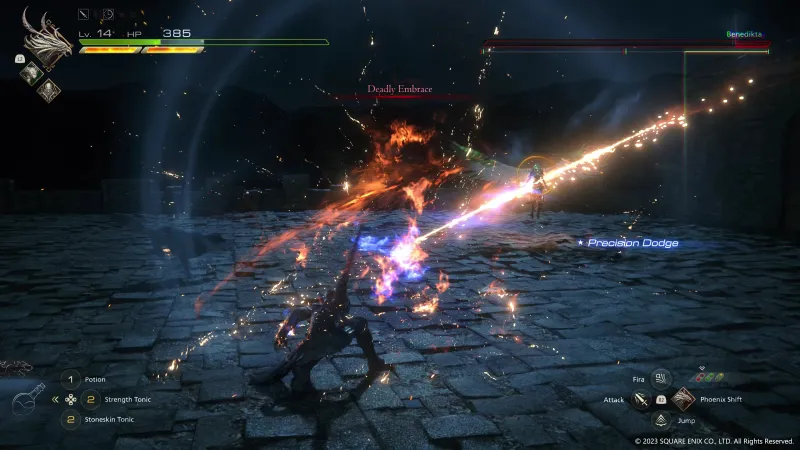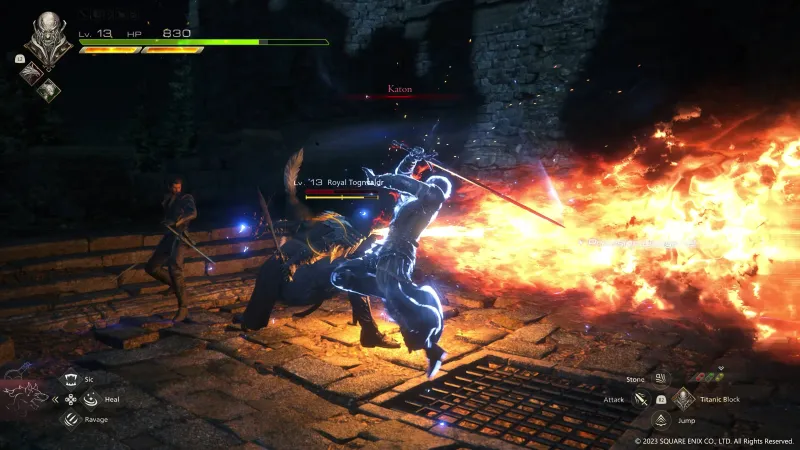
Final Fantasy XVI is the most action-forward mainline Final Fantasy game in the series yet, and that’s in no small part due to the person behind its action: combat director Ryota Suzuki. After nearly 20 years at Capcom working on combat for games like Marvel vs. Capcom 2, Devil May Cry 4, and most recently, Devil May Cry 5, Suzuki decided he was ready for something new.
That “something new” turned out to be FFXVI. The game’s director, Hiroshi Takai, and its producer, Naoki Yoshida, offered Suzuki a role at Creative Business Unit III, leading FFXVI’s combat design. And now, on June 22, players will be able to feel what I felt during a recent hands-on preview of the game: it’s very Devil May Cry meets Final Fantasy, in the best way.
While playing, one thing I noticed was that FFXVI doesn’t really grade your performance in combat like Devil May Cry, despite feeling like the kind of action game that would. That’s intentional, according to Takai.
“You maybe didn’t realize it, but while you’re playing the game, the game is actually telling the score in the background,” he says. “The reason we don’t show this all the time goes back to that core concept of making this game not just for the hardcore players, but making it for everyone.
“When someone’s playing a game, and they feel like they’re doing well…they think, ‘I’ve tried my best’ and then get Rank 6. We look at that as a demotivator for some players and we didn’t want that.”

However, for the action players that do want to see how they performed in combat, Final Fantasy XVI will have a special unlockable mode just for that. It’s called Arcade Mode and will be accessible from a special in-game hub after it’s unlocked by progressing through Clive’s story.
“In this mode, players will be able to replay stages that they’ve already played, but this time with the score keeper on so you get to basically see your performance and how you’re doing and then use that as a guide of how to improve yourself in the game,” Takai says. “This…will be attached to leaderboards so players will be able to see how they stack up against players from around the world.”
Yoshida follows up, adding that it was really important to keep “downers” like a big Rank C notification on-screen after combat out of the main scenario. He says it’s not just about the score, though, because “we also know that we’re going to have those players that are going to want to challenge themselves, that are going to want to see those scores, and that’s why we have this optional content that will allow players to go in there and challenge themselves and aim for these higher scores.”

As for how the scores will be calculated, Suzuki says “first and foremost, the base is basically how much damage that you’re dealing to enemies.” However, dealing damage using special actions, like Eikonic abilities, will add bonus damage and points. Hitting multiple enemies at once does, too, as does nailing a perfect block and then nailing three more after it.
“The scores go up based on the player’s actual technique,” Suzuki says. “This isn’t limited to the Eikonic abilities. It’s also based on Clive’s regular abilities. For example, things like parrying when an enemy attacks…and following up with different attacks after that, whether they be Eikonic attacks or regular attacks, will earn you different points.”
Unfortunately, I was not able to check out this Arcade Mode in-game, but it’s nice to hear it’s included.
For more, read my full Final Fantasy XVI preview thoughts here.
Source: Game Informer Final Fantasy 16 Will Feature An Arcade Mode With Devil May Cry-Style Combat Scores

